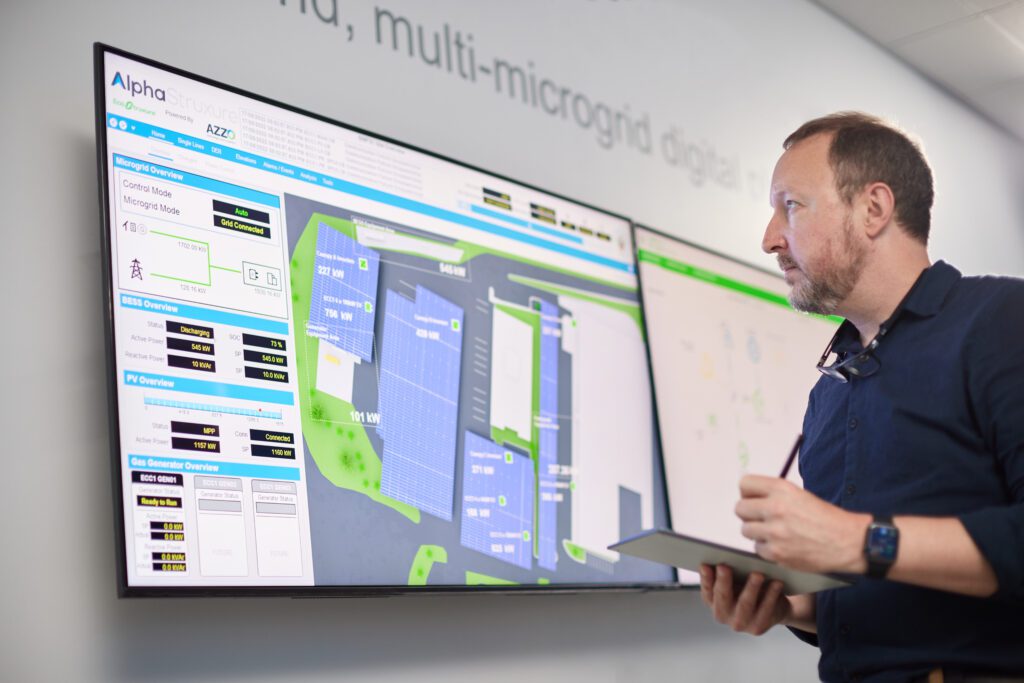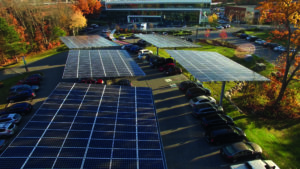Right now, the world is facing an urgent sustainability dilemma: On one hand, we’re seeing rapid transformations in technology across all sectors, thanks to digital intelligence.
Cars, computers, phones — the everyday technologies we rely on — are all dramatically more advanced than just a decade or two ago.
On the other hand, the way we power these advancements depends on 20th-century technology. Specifically, the energy sector account for about 80% of U.S. carbon emissions, while overall greenhouse gas emissions continued to increase in both 2021 and 2022.
Here’s where microgrid technology comes into play. Microgrids are self-contained electrical networks that draw from on-site energy sources (e.g., solar panels and batteries) and can operate independently of the grid. Microgrids offer straightforward solutions for elevating energy resilience and clean energy. Thus, they’re a key 21st-century solution for powering 21st-century technologies.
Anyone who knows me knows that I could talk about microgrids all day as I am very passionate on their value for resilience and sustainability. I often do, as North America Microgrid President! In this article, however, I’ll let other experts do the talking. At Innovation Summit North America, I had the privilege of hearing microgrid pioneers share top takeaways after building some of the country’s leading microgrids. These pioneers included: Michael Yambrach, Chief of Montgomery County, Maryland’s Office of Energy and Sustainability Montgomery County; Ben Hext, an Industry Analyst in the Verdantix Smart Buildings practice; and Clark Wiedetz, Chief Sales Officer, GreenStruxure. Here are the three most interesting insights they shared.
1. Start with a right-sized microgrid design to optimize cost efficiencies.
If you’ve been following Schneider’s blog and latest news stories, you’ll be familiar with Michael Yambrach. Michael leads Montgomery County, Maryland’s new Brookville Bus Depot microgrid project, which uses a Schneider microgrid as the backbone of its new electric vehicle (EV) charging infrastructure for a rollout of 70 electric buses. Michael shared some from-the-trenches lessons, including the fact that you really can’t introduce a one-size-fits-all microgrid. In fact, those of us in the industry often joke that “If you’ve seen one microgrid, you’ve seen one microgrid.”
In other words, right-sizing is everything, and it must happen at the design phase for the microgrid to deliver measurable energy-cost efficiencies. There are many factors that go into microgrid design: What is the specific load to power? What are the load requirements at any given time? What are the demand sources? Take the time to get the design phase right so you’re not left with an under- or over-sized microgrid. Your goal is to design a Goldilocks-approved microgrid: one that’s just right for your energy needs!
2. Consider the option of an Energy-as-a-Service funding model.
Another key takeaway from the panelists was just how complex microgrid projects can seem at first, and how, in some cases, the best route was to outsource the technical challenges to someone else. For many organizations looking to build microgrids, microgrids aren’t their core, or even peripheral, business. Their existing staff may not feel comfortable trying something new, when for decades their facilities had the same one-way relationship between grid and plug.
That’s when an Energy-as-a-Service (EaaS) model becomes a solid choice. Working with an EaaS partner such as GreenStruxure or AlphaStruxure, for instance, eliminates the complexity of the new energy landscape while removing the financial, technical, operational, and regulatory risks that traditionally come with projects meant to accelerate the renewable energy transformation. An EaaS business model also can shift upfront capital and risk to your EaaS partner.
I agree with Ben Hext, an Industry Analyst in the Verdantix Smart Buildings practice, who emphasized that cost optimization is just as important as the drivers of resilience and sustainability, particularly as energy prices have hit new highs in many major economies. Microgrids mitigate that risk or at least provide predictability in the pricing.
An EaaS partner such as GreenStruxure or AlphaStruxure can help ensure your microgrid project delivers all three outcomes working in concert with each other: resilience, sustainability, and energy-cost efficiencies.

3. Adopt a phased approach to microgrid deployment.
The panel also discussed the phases of microgrid deployment. Don’t think you have to tackle all your organization’s sustainability goals at once. Michael Yambrach suggested that microgrid stakeholders approach any microgrid project as a part of the organization’s broader decarbonization strategy.
At present, for example, Montgomery County is designing its microgrids based on solar batteries with natural-gas-powered generators. Its longer-term strategy is to move from natural gas to renewable natural gas to hydrogen. In other words, as Michael emphasized, “No one can jump in and decarbonize everything all at once. It’s a strategy to get from point A to point B.” For Montgomery County, point B is quite an ambitious target: net-zero emissions by 2035. The e-bus depot will play a big role by eliminating 160,000 tons of carbon emissions over the 25-year project.
Clark Wiedetz, Chief Sales Officer, GreenStruxure, notes that even decarbonization efforts can be tiered. Bimbo Bakeries, for example, first enlisted GreenStruxure to assist with lowering Scope 2 emissions; now, they are focused on reducing Scope 1 emissions as well.
Are you ready to get on the (electric) bus?
It was clear and heartening to me to walk away from our Innovation Summit panel knowing that the private and public sectors have come together to facilitate the energy transition by leveraging microgrid technology. Now, there even is federal funding to help move the needle on infrastructure projects that adopt green and clean technologies.
Based on my conversation with Clark, Michael, and Ben, I am hopeful that microgrids will stand out as an emerging technology based on 21st-century energy technology to level up energy infrastructure itself. I hope many more forward-thinking organizations join us by getting on the (electric) bus racing toward meaningful change. In addition to the residential community grid project that my colleague Rich Korthauer talked about, the Brookville Bus Depot is among the coolest projects we’ve worked on to date. Michael gave us a worthwhile insider view at Innovation Summit; now, you can take a deeper dive into what this project entails and what makes it such a far-reaching example of a microgrid done right — one that gets an A+ in my book!



